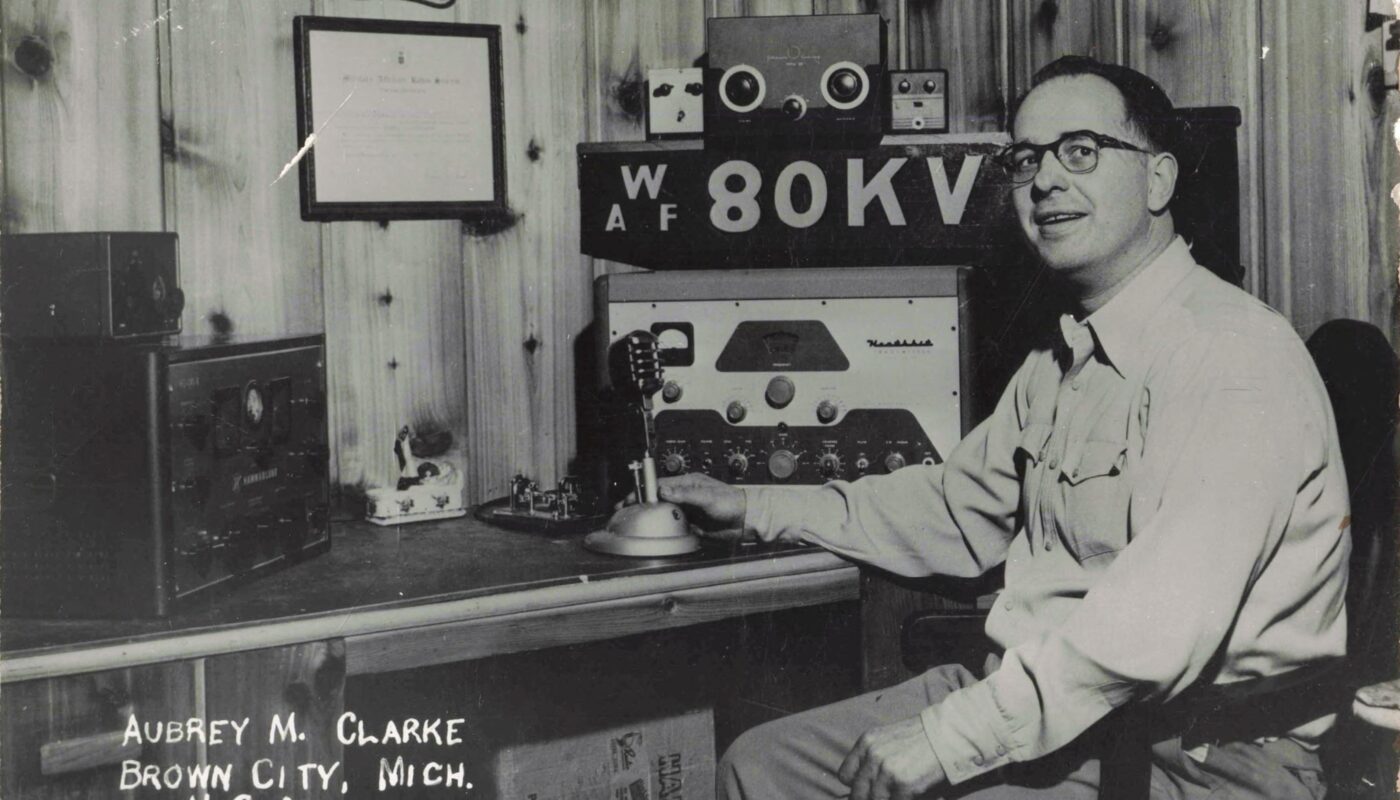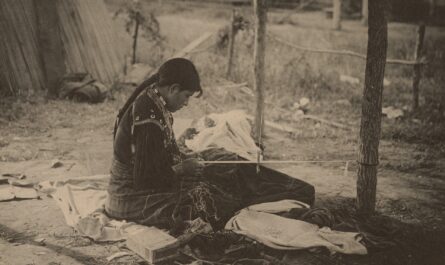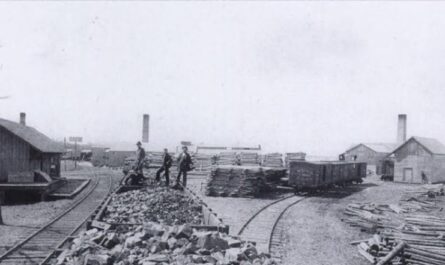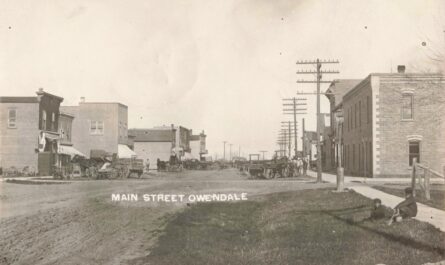We found an interesting photo from the 1950s that shows Aubrey M. Clarke seated in front of a panel of radio equipment, a microphone in one hand, and a confident smile on his face. Clarke’s call sign—W8OKV—is prominently displayed, along with his location: Brown City, Michigan. It’s a snapshot of a time when amateur radio, or “ham radio,” was very popular and connected small towns like Brown City to the world.
A Michigan Operator and His Station
Aubrey Merville Clarke was born in 1920 and grew up during the golden age of radio. He served his country in the United States Army during World War II from 1942 to 1946. By the 1950s, he was an active ham radio operator licensed under the call sign W8OKV, operating from Sanilac County. Records from the Radio Amateur Callbook confirm his active license in Brown City as early as 1954.
Clarke later moved to Durand, Michigan, where he continued his lifelong hobby. He remained licensed through at least 2005, holding the same call sign for over five decades. At the time of his passing in 2008, he was remembered for his work with the Shiawassee Amateur Radio Association and for mentoring new operators.
The Role of Amateur Radio in the 20th Century
Amateur radio experienced a surge in popularity in the early 1900s, particularly after World War I. Thousands of hobbyists—many using home-built or war-surplus equipment—began operating from their basements, attics, and garages.
By the mid-20th century, the U.S. had over 100,000 licensed operators. Many focused on DXing (long-distance communication), emergency response, and Morse code transmissions. It went beyond being a mere hobby; amateur radio filled gaps in communication networks before the internet or cell phones existed.
Operators like Clarke often monitored local airwaves, relayed messages during disasters, and served as early adopters of electronic communication.
What Did “80KV” Mean?
The sign “80KV” visible in the photograph refers to Clarke’s use of the 80-meter amateur band (3.5–4.0 MHz). This frequency was commonly used for regional and nighttime communications. The term “KV” may have been shorthand or stylized signage for his station name, but his official FCC call sign remained W8OKV.
The equipment in the image shows a classic AM/SSB transmitter and receiver setup, complete with a base microphone and a straight key for Morse code. This was standard fare for ham operators in the postwar era.
How It’s Used Today
While the digital age has changed how we communicate, amateur radio is far from obsolete. Today’s operators use digital modes like FT8, packet radio, and Winlink to send emails without internet access. Others provide emergency communication for agencies like FEMA and the Red Cross during natural disasters.
Michigan remains a hotspot for ham radio activity. The state boasts dozens of amateur radio clubs and repeaters, with events like Field Day drawing crowds of operators each year. Organizations like the Michigan QRP Club and Great Lakes Emergency & Traffic Net (GLETN) keep the tradition alive.
The FCC currently lists over 700,000 licensed amateur operators in the U.S., including hundreds still operating from small towns across Michigan.
Final Transmission
The image of Aubrey M. Clarke in his radio shack is a window into a period when radio waves carried voices across continents, and Michigan’s farm towns were on the map in ways that mattered. Clarke’s legacy lives on in every operator who keys up a mic or tunes a dial in pursuit of the next clear signal.




